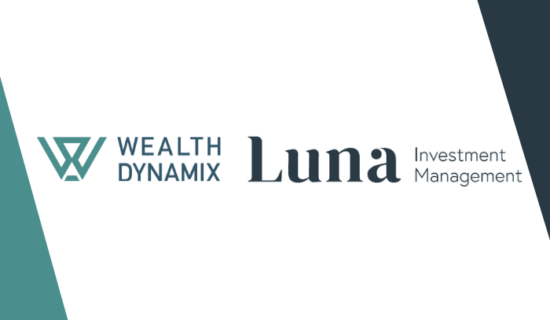There’s never been a more important time for marketing professionals to ensure that their campaigns are diverse and inclusive. Research from Google found over two thirds of customers reacted after seeing such an advert. For the LGBTQ+ community, this rose to a whopping 71%. When people recognise themselves within a brand, it increases trust, loyalty, and engagement. And the pendulum swings the other way too. Three quarters of Gen-Zs end relationships with brands whose ads are perceived as macho, racist or homophobic.
Companies who exclude customers – consciously or unconsciously – do so at their peril. With so much hanging in the balance, let’s breakdown four strategies to demonstrate diversity and inclusion across marketing content.
Listen to the original FINITE B2B Marketing podcast here
1. Check language for unconscious bias
“Look at the language that you use”, begins Heavens. “Not just as in different languages that we speak, but as in the tone of language as well across all of your marketing content”.
Language bias has long been an issue for brands. Positioning parents as “she” or businesspeople as “he” is a sure-fire way to alienate customers. Textio research from found companies’ language bias is so prevalent it can even affect our career choices. For example, the County of Los Angeles repeatedly used macho terms such as, “competitive” and “manages” in job descriptions. After switching these words to “initiative” or “care for”, the number of female applicants jumped up considerably. This same principle applies to marketing campaigns.
Be mindful of cultural expressions, sports metaphors, and gendered language. The Content Marketing Institute encourages professionals to research audiences to ensure that all genders, income levels, geographies and ethnicities are included.
2. Create a diverse pool of content creators
To capture the most inclusive language, a good place to start is with the writer. The person who writes or creates your content is important. Their biases, life experiences, and knowledge on the subject will seep through the screen and leave an impact on your audience. It’s reported that an eye-popping 61% of 18-34 years olds are swayed in their decision-making by creators. To avoid alienating groups, and attract as many new customers as possible, Heavens recommends bringing in a diverse range of creators.
“Look outside of your typical circle for content contributors”, she empathises. “[Aim for] more diversity in the writers that you’re using so you’re getting lots of different perspectives.”
Authentic content from real and diverse creators can help your brand thrive.
“70 per cent of people can tell the difference between a brand or a stock image, and a real customer created image. Rather than thinking about using an image and just having diverse types of people in that image, think about the diversity of the image itself.”
3. Create authentic posts and images
Customers sniff out fakery a mile off, and when they do, it doesn’t go down well. PepsiCo famously lost brand value in 2017 with their Black Lives Matter advert, which implied that police brutality could be prevented with the soft drink. And today, more than ever before, consumers will call out companies who do not live up to their marketing. “Ninety per cent of consumers say that authenticity is important when deciding which brands they like and support”, explains Heavens. “It’s not enough that we just have this gentle nod to diversity and inclusion. We’ve got to make it authentic”.
One way to enhance authenticity, according to Heavens, is to ditch the stock images and take real pictures. “70 per cent of people can tell the difference between a brand or a stock image, and a real customer created image”, she explains. “Rather than thinking about using an image and just having diverse types of people in that image, think about the diversity of the image itself””.
4. Nurture a culture of inclusion
Another way to create authentic marketing content, of course, is to become a truly diverse and inclusive team. Bringing in content creators from different backgrounds and checking language bias in job descriptions helps. But what can make the most impact is creating a culture where exclusionary comments are corrected, while diversity and inclusion is nurtured at every level.
“Without that inclusive culture”, explains Heavens. “Then little episodes of having to point out [biases], are going to be uncomfortable. But if you have that inclusive workplace … then actually those conversations are less uncomfortable because you’re open about it, you’ve talked about it. So, it’s not a shock when somebody does get a tap on the shoulder; it’s encouraged”.
Little taps on the shoulder are crucial for brands to thrive in 2021 and beyond. Marketing may be the face of the company, but today’s social-savvy shoppers can quickly by-pass that and look straight into the beating heart. If diversity and inclusion are not there, your customers won’t be either. Study after study proves that companies who nurture diversity and inclusion perform better too. One report found that such companies are eight times more likely to achieve the best business outcomes, and twice as likely to exceed business targets.
Client profiles are evolving, content must too
It’s difficult to pinpoint the exact demographics of HNW investors. But we can say with confidence that they are changing. In the 1990s, North American and European men controlled most of HNW wealth. However, today it’s North American and Asian Pacific clients who rule the roost. And it’s not just men either. Women are taking up an increasing share of the wealth. 15% of UHNW investors are female. And experts predict that women will hold 60% of global money by 2025. Much of this is because of burgeoning female entrepreneurship which rocketed over recent decades. 40% of all U.S. businesses today are owned by women, a 144% on twenty years previously.
Black-owned businesses are thriving too. African American businesses surged by a whopping 400% in 2017, again, mostly fuelled (65%) by women. While the pandemic has dampened the rise, it hasn’t put it out. In Los Angeles alone, black businesses enjoyed a 63% boom during 2020.
Now, more than ever, relationship managers must reach out to existing and potential clients groups with fresh, relevant and authentic content. In a crowded market, HNW investors do not have the time to look at bland stock images or blogs which were clearly not written for them. A meagre 41% of LGBTQ+ millionaires today feel that their wealth manager understands their needs. Women feel much the same way, 63% of HNW females are unhappy with their wealth manager. As clients demand evermore hyper-personalisation, wealth managers need to prove that they can be understanding, empathetic and real… Before someone else does it better. Following these simple steps – Language, Writers, Images and Culture – is just the beginning.





